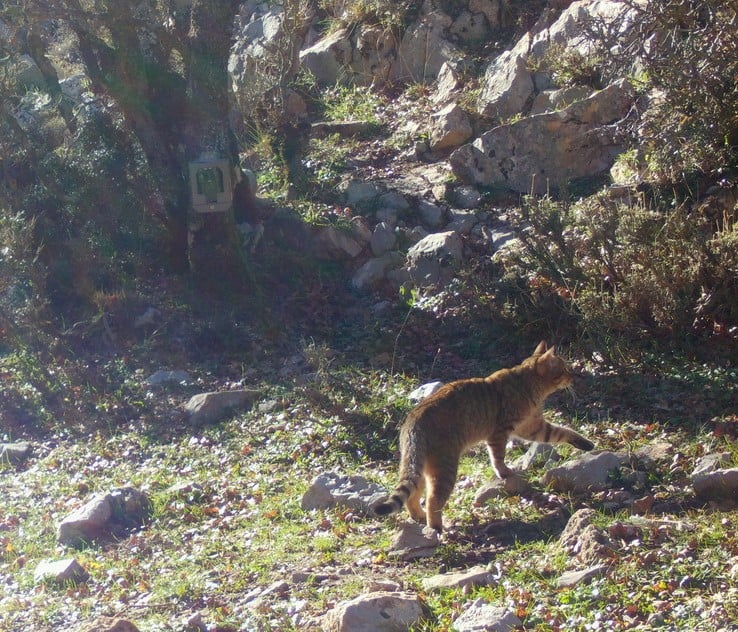

The Cretan wildcat, the legendary creature of Crete is no longer confined to myth and folklore. Scientifically known as Felis silvestris cretensis, and known locally as the furogatos, it is not only the island’s sole wild feline but also its largest exclusively carnivorous mammal.
Long considered extinct, new research by the Natural History Museum of Crete (University of Crete) has revealed that this elusive predator is not only surviving but thriving in significant numbers.
Using an extensive network of camera traps across Crete’s three major mountain ranges—the White Mountains, Psiloritis, and Dikti—scientists have recorded population densities ranging from 0.5 to 2 individuals per square kilometer of suitable habitat. This discovery challenges previous assumptions about the species’ rarity and highlights its resilience in Crete’s rugged landscapes.
Once thought to have vanished until its accidental rediscovery in 1996, the Cretan wildcat plays a crucial ecological role as a top predator. Its presence serves as an indicator of the island’s environmental health, as apex predators are typically among the first to disappear when ecosystems become destabilized.
Despite this promising revelation, the Cretan wildcat still faces numerous threats, according to the study, including:
The next phase of research will focus on collecting and analyzing genetic material to determine the extent of interbreeding with domestic cats and clarify its evolutionary relationship with the European wildcat (Felis silvestris) and the African wildcat (Felis lybica).
This deeper understanding will be crucial for developing conservation strategies to ensure the long-term survival of this once-mythical predator.
Crete has a unique mix of wildlife due to its isolation and varied landscapes. While it lacks large predators like bears or wolves, it is home to several fascinating mammals, many of which are endemic.
For example, the Cretan Ibex (Capra aegagrus cretica), known as the kri-kri, is a wild goat is an iconic species found mainly in the White Mountains and remote gorges.
Also the Eurasian Badger (Meles meles arcalus), which is a subspecies of the European badger that inhabits Crete’s forests, and the Cretan Weasel (Mustela nivalis galinthias) which is a local subspecies of the least weasel, an agile predator.
Crete is also a vital stopover for migratory birds and home to many raptors. The bearded vulture (Gypaetus barbatus) is one of the rarest vultures in Europe. The Griffon vulture (Gyps fulvus) is often seen soaring over gorges and the Golden Eagle (Aquila chrysaetos) is a top predator in Crete’s skies.
Related: Over a Fifth of Greece’s Wildlife Is Critically Endangered
